- News
- Reviews
- Bikes
- Components
- Bar tape & grips
- Bottom brackets
- Brake & gear cables
- Brake & STI levers
- Brake pads & spares
- Brakes
- Cassettes & freewheels
- Chains
- Chainsets & chainrings
- Derailleurs - front
- Derailleurs - rear
- Forks
- Gear levers & shifters
- Groupsets
- Handlebars & extensions
- Headsets
- Hubs
- Inner tubes
- Pedals
- Quick releases & skewers
- Saddles
- Seatposts
- Stems
- Wheels
- Tyres
- Tubeless valves
- Accessories
- Accessories - misc
- Computer mounts
- Bags
- Bar ends
- Bike bags & cases
- Bottle cages
- Bottles
- Cameras
- Car racks
- Child seats
- Computers
- Glasses
- GPS units
- Helmets
- Lights - front
- Lights - rear
- Lights - sets
- Locks
- Mirrors
- Mudguards
- Racks
- Pumps & CO2 inflators
- Puncture kits
- Reflectives
- Smart watches
- Stands and racks
- Trailers
- Clothing
- Health, fitness and nutrition
- Tools and workshop
- Miscellaneous
- Buyers Guides
- Features
- Forum
- Recommends
- Podcast
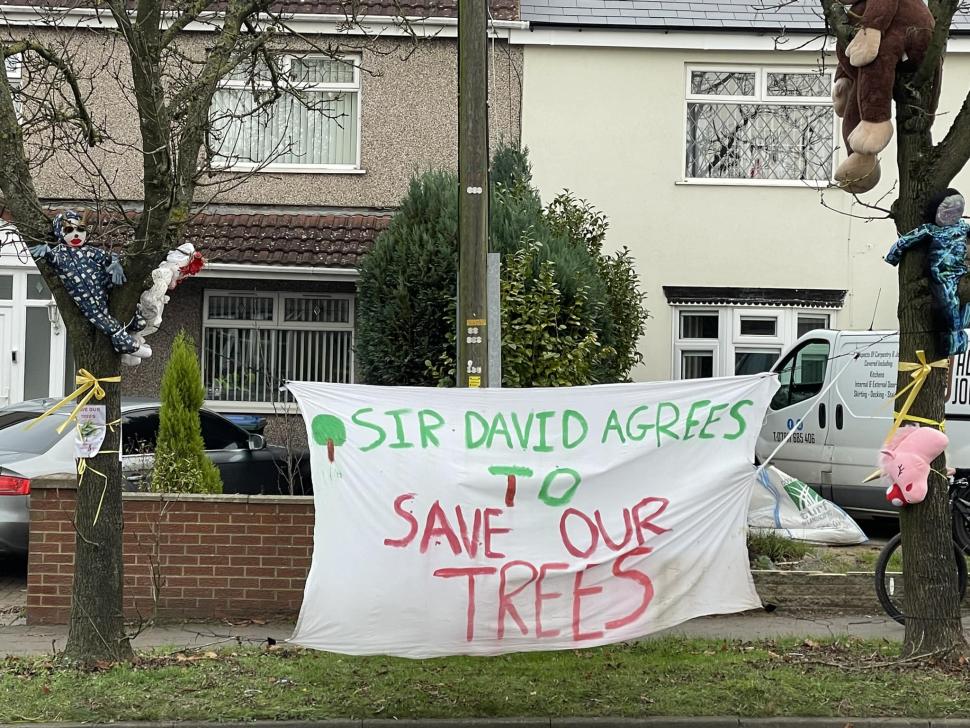 "Sir David agrees to save our trees" banner in Coventry
"Sir David agrees to save our trees" banner in Coventry‘Tree-hugging’ cycle lane opponents ‘backed’ by David Attenborough accuse council of spreading “misinformation” – but local authority says trees are only being cut down because residents opposed loss of on-street car parking
Campaigners attempting to put a stop to the final phase of a cycle lane project in Coventry, which last week saw them take part in a mass tree-hugging event to highlight their opposition to plans to cut down 26 trees to make way for the new active travel infrastructure, have accused the local council of spreading “misinformation” about their motives for opposing the cycleway.
In a formal complaint sent to Coventry City Council this week, Dawn McCann, one of the leaders of the opposition to the planned Clifford Bridge Road cycleway, argued that the local authority was “misleading the public” by “putting out several untrue statements”, denying that the scheme’s original design was rejected by residents due to plans to cut the number of on-street car parking spaces.
McCann, who claimed that the current design is “unsafe” and that other parts of the cycleway are causing frequent collisions, also refuted the council’s claim that many of the 26 trees earmarked to be felled as part of construction works are infected with the disease Ash dieback, instead insisting that the trees are in “fine condition” and are simply, in the council’s eyes, “in the way”.
However, the head of public realm at Coventry City Council has told road.cc that plans to cut parking spaces had made the scheme “unacceptable” to residents, while noting that other areas where the cycleway has been installed have led to a “significant reduction” in collisions, increasing safety for vulnerable road users.
The local authority also maintained that the trees along the Clifford Bridge Road are set to die within the next decade and that their plans, which include planting more trees than are due to be felled, have been approved by the Wildlife Trust.
Meanwhile, the council says that the anti-cycle lane opponents’ suggested alternative route – through a nearby parkland – would mean a greater number of trees would be felled to allow for the bike path’s construction.
“We’re not anti-cycleway”
According to Coventry City Council, the 6km-long protected Binley Cycleway project, which will link the city centre to University Hospital Coventry, was “developed and designed to accommodate the needs of people that do not usually cycle” by reducing concerns about safety and lack of confidence.
(Coventry City Council)
However, despite the council’s ambitions to promote sustainable travel in Coventry, the final phase of the project on Clifford Bridge Road has been the subject of intense scrutiny and criticism from locals in recent months.
In fact, the council has been forced to redesign the scheme three times, after feedback from locals revealed concerns about reduced parking provisions along the road, the proposed narrowing of lanes for motorists, and the potential danger for drivers “reversing blindly” across the bike route, while a second design was opposed by residents and cyclists alike due to safety concerns.
In August, we reported that a petition was launched, reaching around 4,000 signatures, urging the local authority to stop the cycleway scheme “immediately” to save the “irreplaceable” trees on Clifford Bridge Road, despite the council pointing out that, if the plans are approved, the 26 felled trees are set to be replaced by 32 saplings and a range of low growing plants.
The campaign won the rather unexpected backing of Sir David Attenborough, and on Saturday the UK’s largest ever tree-hugging event was held, as 900 people turned up to voice their opposition to the council’s plans.
Clifford Bridge Road, Coventry (Google Maps)
However, after Coventry City Council’s head of transport and innovation John Seddon appeared on local radio on Monday to discuss the protest, the residents behind it have lodged a formal complaint to the local authority criticising the councillor’s depiction of them in the media.
“On Saturday 16th November we organised a record-breaking tree hug, hopefully to help save the 26 trees that are planned to be felled to make way for a cycleway, on Clifford Bridge Road,” the complaint, seen by road.cc, reads.
“As part of a response on the radio to the hug, John Seddon lied and said the first cycleway plan was rejected by residents because of loss of parking. In fact, it was stopped and redesigned because the road was going to be narrowed and would make access to local hospital virtually impossible at peak times. Measurements by officers were incorrect.
“The second plan was rejected by both cyclists and residents (there were two petitions) as being unsafe. The present plan remains unsafe.”
The complaint also alleged that the council’s assertion that many of the 26 trees are infected with Ash dieback, a highly destructive fungal disease killing the UK’s native common ash species, was incorrect.
“He also said the trees had Ash dieback, we have already proved this to be untrue, they are also not stressed,” it said. “The trees have been inspected by tree wardens and found to be in fine condition. The truth is the trees are in the way.
“As a society we have to deal with misinformation from media and social groups, we do not expect council officials to mislead the public.”
The author of the complaint, Dawn McCann, told road.cc that those opposed to the planned bike lane on Clifford Bridge Road are “not anti-cycleway”.
“But we are concerned about the safety of cyclist and vehicles,” she said. “The council have not carried out any junction splays, apart from one initial safety check which only showed a post box on the pavement to be an issue.
“In the space of less than half a mile there are 90 cars parked on drives on this stretch, all having to cross a cycleway with little or no visibility.
“We have asked several cycling organisations to come and look at the road, but they have all declined.”
She continued: “We have been trying to make the cycleway safe for the past four years. The present plan was agreed last November on the proviso that all the safety issues were resolved. Unfortunately, none of these issues have been rectifies.
“We had no idea we were losing 26 trees. We were initially told it would be 13, however once the tree orders were put on trees the public became aware of the issues, and I raised a petition to save the trees and received over 4,000 signatures – lots of them cyclists.”
(Supplied by Dawn McCann)
Sharing a photo (above) of what appears to be a stricken and bloodied cyclist, Dawn said: “We had three accidents on the Binley cycleway two weeks ago, one of them captured on a dash cam picture.
“No one wants to injure a cyclist or pedestrian, we want everyone to feel safe on the roads.”
When asked if she could provide some further information about the collisions, Dawn offered no additional evidence.
“The scheme was unacceptable to residents”
While McCann is adamant that any suggestion that the initial opposition to the cycleway was based on fears surrounding the loss of on-street car parking spaces is a “lie”, Coventry City Council’s Mark O’Connell says the original uproar was key to the current compromise design on the table, including the proposed loss of the 26 trees.
“In the first iteration of the scheme, there were some loss of trees involved, but nothing like the 26 we’re talking about now,” O’Connell, the local authority’s head of public realm, told road.cc.
“But as part of that design, there was going to be a loss of parking spaces. We’re talking about on-street car parking, not off-street. And the loss of parking spaces would have been adjacent to or outside properties that have already got private parking – it’s not like you’d have had nowhere to park, it wouldn’t have been like that at all.
“Also, as part of that scheme, the road was going to be narrowed, but leaving it plenty wide for two-way vehicle traffic.”
He continued: “But there was obviously a lot of uproar, petitions, and public feeling, and those were the two big things that they commented on, that they didn’t really like, so that that scheme was unacceptable, and we got told to go away again.
“And so on the radio on Monday, John mentioned that the increase in loss of trees is due to residents not being happy with the loss of parking in the first iteration, which is true.”
According to O’Connell, the third iteration of the Clifford Bridge Road cycleway has been designed to maintain car parking and the road’s current width, while minimising the loss of healthy trees – noting that, despite McCann’s claims, many of the trees are suffering from Ash dieback.
“They wouldn’t all die tomorrow, but they would eventually die over the next 10 years, just at different rates,” he says.
“So we can then introduce some replacement purpose-built tree pit, or some sort of native species which will flourish.
“But along the route where the trees are of significant value, we’ve actually narrowed the cycleway, so it’s not 2m the whole the way through, saving those trees that have significant. So we haven’t just gone carte blanche.”
Reflecting on David Attenborough’s suggestion for the campaigners to ask for advice from the Wildlife Trust, O’Connell said: “He advised him to go to the Wildlife Trust. And we have. They haven’t raised any concerns. They haven’t objected to the scheme.”
(Save Clifford Bridge Road Trees)
O’Connell says this approach of taking advice from external experts has also been continued when it comes to safety, noting that the council has worked with the Guide Dog Trust and other blind campaigners to come up with the “best possible” floating bus stop design along the cycleway.
“The council has been accused of railroading this through, which just isn’t true. It's been quite a pragmatic decision,” he tells road.cc.
“We’ve had several site visits on this route, to see how people would be impacted with their driveways, or parking, and the outcome of those meetings has been positive. And we’ve had to compromise by integrating some shared-use into it at one point, because of the amount of car parking there, and because people were just parking over the cycleway.
“So we’ve tried to make it a holistic place not just for cyclists, but the people who live there, and pedestrians as well.
“We’ve also showed we will make changes to the design if necessary, we’re not just sticking with it no matter what. Like with the bus by-passes, we’re always improving the design with the funding that we have.”
Clifford Bridge Road
O’Connell also highlighted the apparent hypocrisy evident in the campaigners’ suggestion to reroute the cycleway through a nearby parkland along the River Sowe – a plan, he says, which would wreak a lot more natural devastation than the proposed cutting of 26 trees on Clifford Bridge Road.
“One of the biggest things they’ve asked is ‘why does it have to be on Clifford Bridge Road? Why can’t it be an alternative route?’,” he said.
“And the main suggestion that came through time and time again was the River Sowe valley parkland. But there are obvious safety issues, the park’s not overlooked, you’d have to organise lighting, and it’s also a flood plain.
“But the primary issue is that to go through there, you’d have to fell a lot more than 26 trees. And we’ve made that quite clear when we've done the reanalysis from start to finish on this.”
Coventry’s head of public realm also compared the seemingly belligerent stance of the Clifford Bridge Road residents to those on the city’s London Road, who he says were “happy to narrow the road to save the trees”.
“We’re building a safe design”
And while the resident group’s safety claims appear to rely on anecdotal evidence, O’Connell points out that recent road safety stats have revealed that only three cyclists have been involved in collisions along completed sections of the Binley Cycleway – two of which featured cyclists not even riding in the protected lane when they were hit by drivers.
According to evidence gathered by an external road safety company – “because internal ones have been accused of being impartial, which again is not true”, he says – there has been a “significant reduction” in cycling collisions since the cycleway has been introduced.
“Collisions involving personal injury (PIC) have reduced across the previously completed sections of Binley Cycleway,” the council’s analysis of the data says.
“In the three years prior to each section of the scheme being opened, the total number of PICs were 33, with nine of these involving a cyclist. This gives an average yearly collision rate of 11 and three.
“In the time period since each section was opened for use (up to 28 October 2024), the total number of PICs is 12, with three of these involving a cyclist. Accounting for the different dates each section was opened, the yearly average collision rates are 7.59 and 2.09 respectively.
“No PICs have occurred between cyclists and pedestrians at bus stops or anywhere along the cycle route.”
The council continued: “Notwithstanding, two of the three PICs involving cyclists occurred outside of the newly constructed segregated cycle lane, and there has been a significant reduction in both the total number of PICs and those including cyclists.
“It should be noted that Binley Cycleway is a well-used facility, and despite the number of cyclists substantially increasing along the corridor, PICs involving cyclists have reduced.”
O’Connell says: “For people to say the cycle lane is fundamentally unsafe, the evidence doesn’t align with their view. We’ve done the work to make sure we are building a safe design.”
So, why are Clifford Bridge Road’s residents so up in arms about the proposed cycleway, given its apparent safety and environmental credentials? O’Connell believes it’s down to a basic desire to stop the cycle lane happening at all costs.
“We’re on the third iteration, and there have been significant changes to the design, to incorporate people’s views,” he says.
“It’s the same things that they’ve got an issue with and it’s things that have already been answered, such as road safety and parking.
“But they're still not happy with it, even though they're actually going to gain parking spaces, and the road is unchanged.”
(Abigail Hinley)
Reflecting on the recent mass tree-hugging exercise, O’Connell understands why it captured the imagination of the public (and David Attenborough) – but argues the campaign left out a few key details.
“If you read the publicity and the petition that went out around the trees, and they put up notices on trees and all sorts, you’d get why some people felt so passionately about it,” he says.
“The sign will say ‘the council want to chop down these trees for a cycleway, even though there’s an alternative route, and it’s better’. So it reads like the council are doing this because the council want to do this.
“There’s no context about the history of it, the three iterations, the parking spaces, or road width, or the tree species. It’s literally just ‘the council want to chop down 26 trees, please help us stop them’.
“If you look at the carbon issue as well, there’s 26 trees, but we’re going to plant more trees than we take out. And we’re aiming for modal shift – if you can take vehicles off the road, it has a much bigger impact than a tree would when it comes to carbon reduction.
“But all of that is lost, as it’s all focused on ‘these trees are critical, please help us’. And that’s why it’s got the traction it’s got.”
The petitions opposing the scheme are due to be considered by the council on 9 December.
After obtaining a PhD, lecturing, and hosting a history podcast at Queen’s University Belfast, Ryan joined road.cc in December 2021 and since then has kept the site’s readers and listeners informed and enthralled (well at least occasionally) on news, the live blog, and the road.cc Podcast. After boarding a wrong bus at the world championships and ruining a good pair of jeans at the cyclocross, he now serves as road.cc’s senior news writer. Before his foray into cycling journalism, he wallowed in the equally pitiless world of academia, where he wrote a book about Victorian politics and droned on about cycling and bikes to classes of bored students (while taking every chance he could get to talk about cycling in print or on the radio). He can be found riding his bike very slowly around the narrow, scenic country lanes of Co. Down.
Latest Comments
- Simon E 2 sec ago
Just squirt some thick grease all over his side windows and door panels. If you're feeling really uncharitable you could throw some sand at the...
- David9694 39 min 51 sec ago
check under 'W'for "What cars do to people"
- quiff 1 hour 9 min ago
Less academic, but memorably encapsulated recently by Saoirse Ronan
- quiff 1 hour 20 min ago
Fascinating - I have always thought Hersheys has a whiff of vomit about it!
- Global Nomad 1 hour 21 min ago
good to see you're testing the farsports wheels - hope to see road.cc continue to expand the range of brands it considers. These or the shallower...
- chrisonabike 1 hour 24 min ago
Duly triggered! (At least "it's comedy!" though)....
- quiff 1 hour 25 min ago
Agreed, though those in thrall to the car lease would probably think the same of my coffee expenditure...
- chrisotherwise 1 hour 55 min ago
Sadly very normal. And the sand contains loads of evil little shards of flint.
- quiff 5 hours 16 min ago
"The algorithm" served me an older JV video last week which I now can't get out of my head....
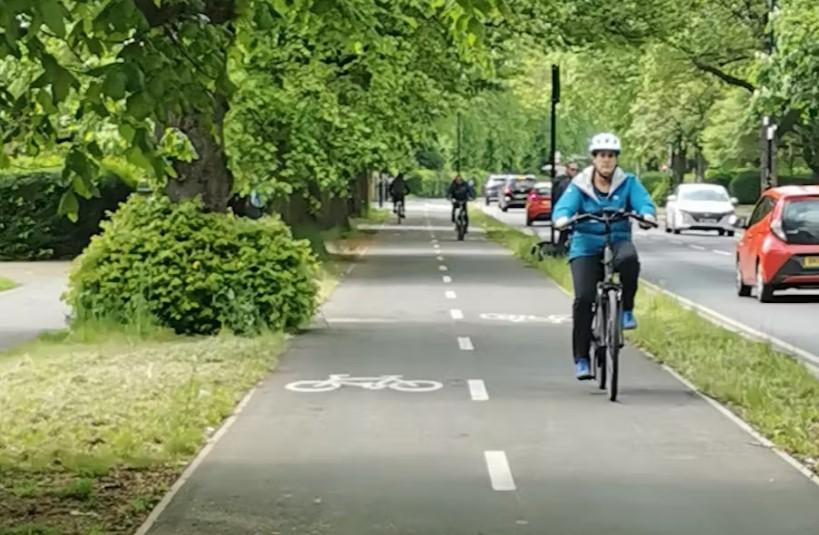
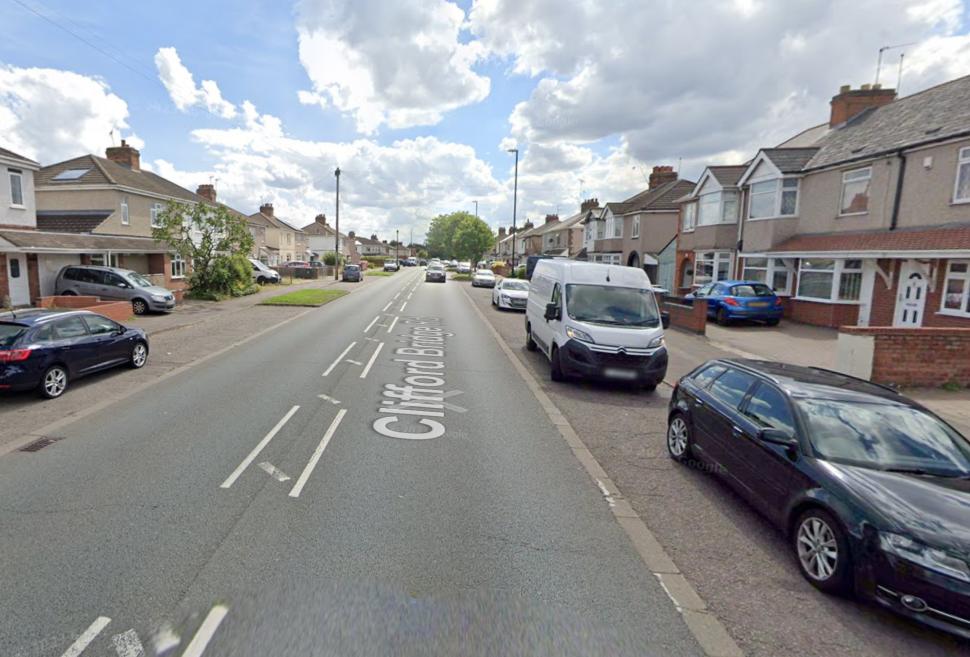
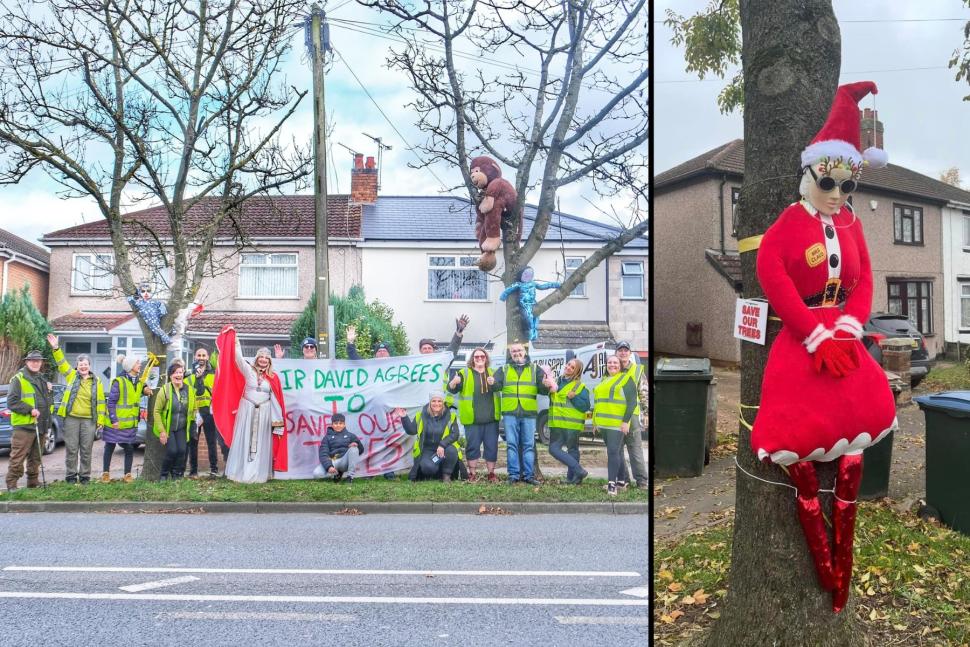

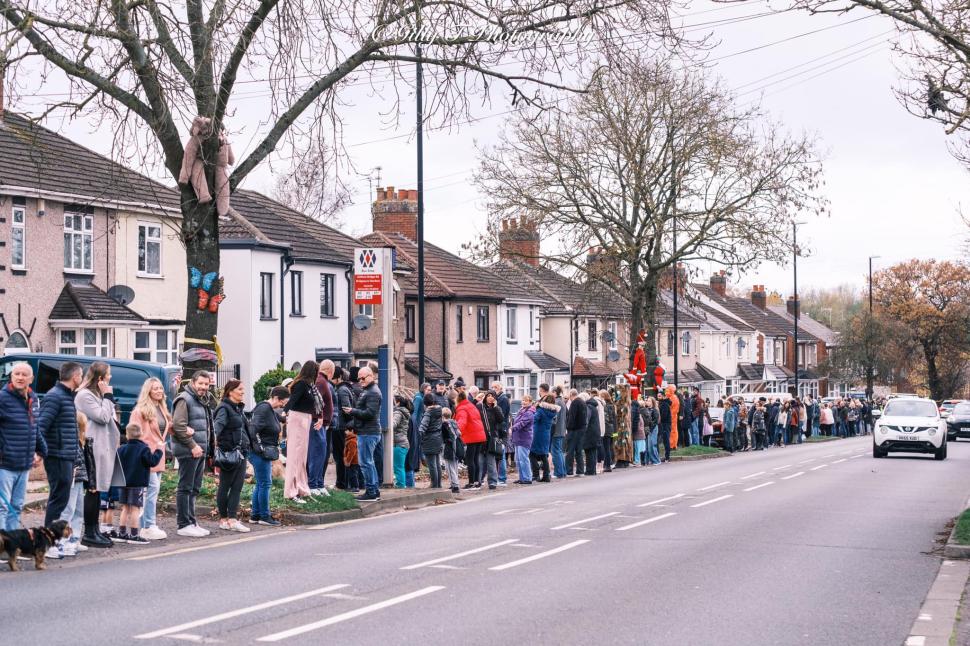
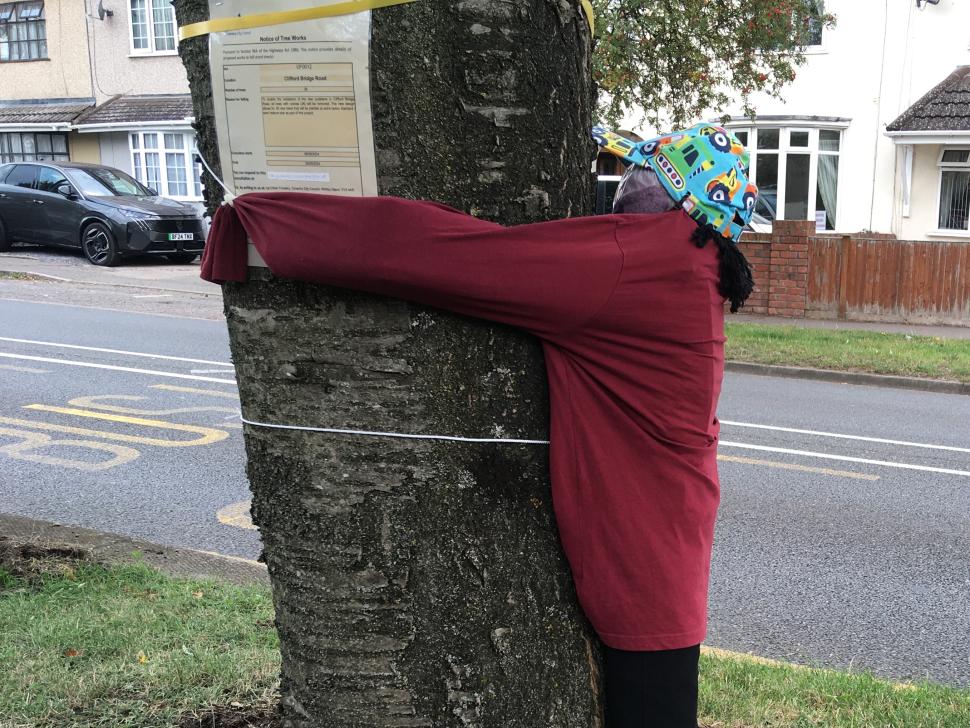
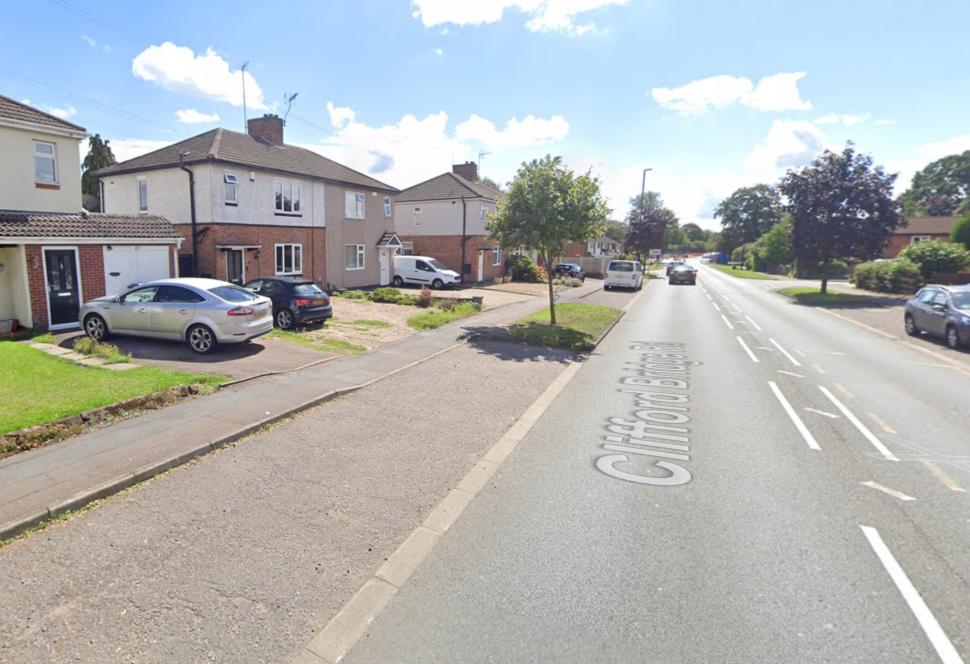


Add new comment
30 comments
No they didn't - not unless they provided hard, indisputable evidence that it wasn't the case. They may have rebuffed, rejected, or rebutted it, but they didn't refute it.
I agree with that pedantry! These things are often confused
I applaud your pedantry - drives me mad too - but don't you realise that this is the social media age? If someone says something is true that instantly acquires the status, at least with their followers, of "hard, indisputable evidence".
The UK's 'Active Travel' checklist seems to be:
It's OK so long as all motorists agree to it- therefore we don't have to do anything.
What we all thought about these dreadful deadbeat objectors at the outset is more and more obviously true- they want as many car parking spaces as possible, and the right to park where they like everywhere else, and they want the roads to be empty like in the adverts. The tree-hugging, 'concern' for the disabled, the poor etc. etc is indeed hypocrisy- simple as that.
“As a society we have to deal with misinformation from media and social groups...."
I wonder if Dawn McCann has mirrors in her house?
Would any of you like to come along to Clifford Bridge Road and look at the safety issues? It would be nice if cyclists would meet us and see the safety concerns for themselves, we have been asking this for several years, but it seems its easy to comdem residents when no one is willing to come along and make safety suggestions.
We have suggested to the council that a lane on either side of the road would be safer, rather than a two way with little visability but they have dismissed this .
Apparently the council intend to develope the Sowe Vally route as a later project, so its odd the Mark O'Connell now says this route is undisirable.
The trees are fine, the council would not be cutting them down if they were not in their way. Shouldn't these deseased trees have been romoved by now if they are as discribed by Mark.
There must be alot of you who are members of this group, and live in or around Coventry please arrange to meet us. We would love for someone to come up with really safe suggestions for this section of cycleway. No one wants to run into a a cyclist please come and help us make this cycleway safe for all.
Yep! The badly-spelled NIMBY-ism variant.
Me! Me miss! I've got a suggestion! 20mph speed limit, and if that doesn't work, ban cars. It's cars that are the danger Dawn, so that's what needs to be controlled: H&S basics.
She did say (in comment) they'd suggested to the council to make this access and emergency vehicles only and the council said no.
No further details on this (presumably some local folks have their version of the saga to put against the council's). I could imagine why this would not fly though - mostly how on earth you'd implement it? Imagine all the push-back from medical staff and even more patients and visitors! Then no doubt general through-traffic demand...
It does look like there is a general hospital access issue here. Fixing that via ring road access would seem to be the way but presumably there is some local situation that makes this difficult (and no doubt expensive)?
The cycle path they are putting in is a bi-directional one. They are a nightmare to cross in a car. Normally you just need to concentrate on looking right to get a space in the traffic, if you have a bidirectional cycle path as well then you need to look left and right at the same time. If you are cycling against the direction of traffic on a bidirectional cycle path then a study made in Berlin shows you are 12 times more likely to be hit by a car than if you stay on the road. Use the cycle paths, but be very careful at the junctions - drivers will not see you.
Surely that's "these drivers pulling out of driveways over a *bidirectional footway* OR cycle path (who just won't look - or not in both directions) - are a nightmare for anyone not in a car (mostly pedestrians, dogs etc)" ?
Hmm... I think this may be a case of comparing two rather different situations. Short - when you're a 2nd or 3rd rate cycle-provision nation (or effectively not yet on the ladder nationally, like the UK) it's still very much "think about the drivers (and secondarily anyone else not cycling)" - and there are more problems to fix regarding cars.
So you'll see articles stating these things are highly dangerous etc.
https://copenhagenize.com/2014/06/explaining-bi-directional-cycle-track....
Here's a more nuanced UK look at these: https://aseasyasridingabike.wordpress.com/2016/06/23/going-bi-directional/
Meanwhile, these appear to be favoured in NL in places for both space efficiency and cycling convenience (although I suspect that putting these on a cycling priority roundabout is not a good idea - I think they might be fine on the non-priority one though).
https://www.aviewfromthecyclepath.com/2019/03/how-bidirectional-cycle-pa...
Are the Dutch deluded (or just or of space, or so keen to cycle they don't care about elevated danger?) In this case I suspect not. Looking at videos of a lot of these you won't see them passing many houses with driveways - in fact car parking is almost always on the road side of these. And at side streets the Dutch have a much better "continuous footway / cycle way" design - motor vehicles crossing these are no longer on the road - they have no "priority" and must proceed (walking pace or below) only when there are no pedestrians or cyclists there.
The latter point of course is "social acceptance" dependent. So ... ultimately, we probably should be very wary of putting bi-directional cycle paths anywhere that UK drivers will be charging in or out of driveways. Even though *footways* are and always have been bidirectional...
Isn't the road the car drivers are pulling on to bi-directional as well, strange how they can see the cars coming from both directions on a bi-directional road but not bikes on a bi-directional cycle path.
To be fair drivers "expect" to deal with traffic in one direction, then another.
Of course - for very obvious safety reasons - drivers always stay on one side of the road and never cross the line in the middle...
It's also the case that - sadly - people probably do a quick glance both ways for pedestrians and if there aren't any immediately in the way they just move on to dealing with the much faster motor vehicles. Basically it's an assumption of motor car priority (the law / training is much less salient than human feeling / heuristics, reinforced by experience).
The example of NL shows that we humans can be trained to be a bit more observant of non-drivers when we drive. Though that still takes a lot to achieve (and probably generation-level time)! It needs social norms / "it could be my friend / partner / child", actual training, the threat of real detection and punishment AND some very helpful and clear infra. Oh - and making the alternatives e.g. not actually driving some trips far more attractive...
BUT even then ... it's always best to acknowledge humans just take shortcuts and make mistakes, and follow the hierarchy of hazard controls. Perhaps we can't eliminate the source of danger (motor vehicles) completely or replace them with something less dangerous (possibly public transport)? OK then can we separate the people (cyclists) from the danger? That would be avoid having drivers cross a cycle path at all.
So parking only on the road side (perhaps in marked bays). No driveways - which would be great for these nature-loving residents as they could have gardens instead of paved forecourts! (The level below that would be at least change the rules / infra so that where cars do cross cycle paths this is made as safe as possible - e.g. using the "continuous footway / cycle path" design.
In my experience drivist use the pavement as a continuation of their drive and pull out across it at speed without the cursory glance, and often poke the vehicles nose out into traffic. Then they look. Generally only in one direction. I have had to shout 'look' many times to signal my presence.
Have you got a link to that Berlin study?
Sounds like the problem is the quantity of road traffic if it's that difficult to find a space to pull out into. Maybe if there was a way that we could reduce road traffic levels by, I don't know, encouraging people to make short trips via foot or cycles?
As noted the problem is mixing modes again. No driveways, no need for drivers in a hurry to cross footways or cycle paths. No problem!
Of course in the UK "but we have driveways"!
Of course ... the Dutch do also!
Some UK places probably really do first need legacy car / public transport and perhaps some walking issues dealt with first?
I'm not a local, but at this location I can't see this road getting sorted without e.g. fixing better access to the hospital, perhaps from the ring road, and then generally reducing traffic so that this road can turn into a residential street, perhaps being split into two so it's not a through-route for motor traffic but you can walk and cycle the whole way?
You've been quoted in the article as being concerned "about the safety of cyclist and vehicles”.
Is that correct and if so could you explain how a vehicle (or someone in one) is at risk from e.g. a cyclist or a pedestrian (such as one walking on footway past someone's driveway?)
Also “In the space of less than half a mile there are 90 cars parked on drives on this stretch, all having to cross a cycleway with little or no visibility."
What do you mean by "little or no visibility"? Are there large walls / tall hedges (height above the drivers' eye line) in front of most properties? Is it the case that there are so many trees - or they're so bushy - than when turning into driveways (or perhaps reversing) it's impossible to see people on the footway or cyclists?
Of course in the UK of today we've all been trained (by habit) to "look for motor vehicles". Because that is the major danger and that's what we mostly encounter on the roads. So that's often where people's attention goes first and longest when approaching a junction (e.g. driveway to road). And perhaps it's all too easy to relax as soon as we've turned into a driveway (maybe we're just looking out for the gate, our cat, or a child there)?
“We have asked several cycling organisations to come and look at the road, but they have all declined.”
In my experience local cycling groups (or even local chapters of larger groups like Cycling UK or pedestrian groups like Living Streets) are quite friendly and have people who will find time to respond to queries. Albeit local groups tend to be just "collections of individuals" like any local interest groups.
Motor normative nonsense. I bet you're one of those drivers that crash into other road users all the time because you have to constantly focus on your speedometer to keep within those annoying speed limits
I encountered a bipolar psychopath once....
Surely traffic lights at the end of every driveway would be optimal?
Ultimately, some may say this is yet another group of NIMBYs virtue signalling and grasping at straws (or more accurately tree trunks) in order to deliver their preferred outcome (allegedly)???
Don't forget though "Englishman's home is his castle" - which includes my rights to grow a giant curtain wall of Leylandii to "protect my privacy". Thus meaning I (and often my neighbours) "have to drive" over the footway effectively blind before we can see anything other than what's right in front of us - which is "our access rights" of course.
Can't be bothered to Google but no doubt this has led to "tragic accidents" where people have been run over when people drove "muscle cars" or literal tanks into / out of driveways...
As you have to do if you are turning right anyway. If someone finds checking in both directions, as they should do at every junction, when pulling out "a nightmare" then they are most certainly not competent to be driving a motor vehicle on the public highway.
'Meanwhile, the council says that the anti-cycle lane opponents’ suggested alternative route – through a nearby parkland – would mean a greater number of trees would be felled to allow for the bike path’s construction.'
This sums up the hypocrisy, lies, misinformation and BS that anti cycle lane 'campaigners' deal in. Their only concern is that their ability to drive and park is not limited or inconvenienced' in any way. They don't give a toss about trees, nature, pedestrians, the local public realm - only that they can drive, drive, drive.
It also means a detour which is a big deal when you have to pedal so cyclists will tend to stick to the road. Also such a cycle path will be used only by men as women will not feel safe using it, particular at night.
I have to correct Mark O'Connel, the alternative route would need no trees removing, and the council are looking at this route for a future project. Once they get another pot of funding.
Rome 73 come and meet me.
Care to comment on the fact that according to Mr.O'Connell and an external road safety company's data there have only been three cyclist Personal Injury Collisions along the completed sections of the Binley cycle route since they were opened, with only one of those involving a cyclist using the segregated lane, whereas you claim there have been three in the last two weeks, although apparently you can't provide any additional evidence of your claims when asked?
I find it deeply jarring and disappointing that Sir David agrees with these people not wanting a cycle lane. Whenever I watch one of his excellent nature documentaries, the only thing that makes watching his sections (rightly) telling us about the ills of climate change and so on is knowing that I'm trying to do my part by encouraging people to cycle through campaign work. It seems utterly backwards that he'd prefer some dying trees to remain in situe to prevent a sustainable transport route. For someone seemingly so well educated and informed, I can't work out how he's ended up at such a backwards position.
It is possible that he didn't know that many of the trees need to be cut down.
To be fair to Attenborough, he doesn't appear to actually have any involvement in or have offered any particular support for the campaign. A child wrote to him saying 'isn't it terrible that they want to chop down some trees?' and he wrote back saying 'yes chopping down trees is terrible - ask your Wildlife Trust what to do about it'. That letter was probably one of hundreds he was replying to, and I don't suppose he spent more than a few minutes on it. It's highly doubtful he has any idea of the ins and outs of the particular scheme, the alternative options, or the state of the trees.